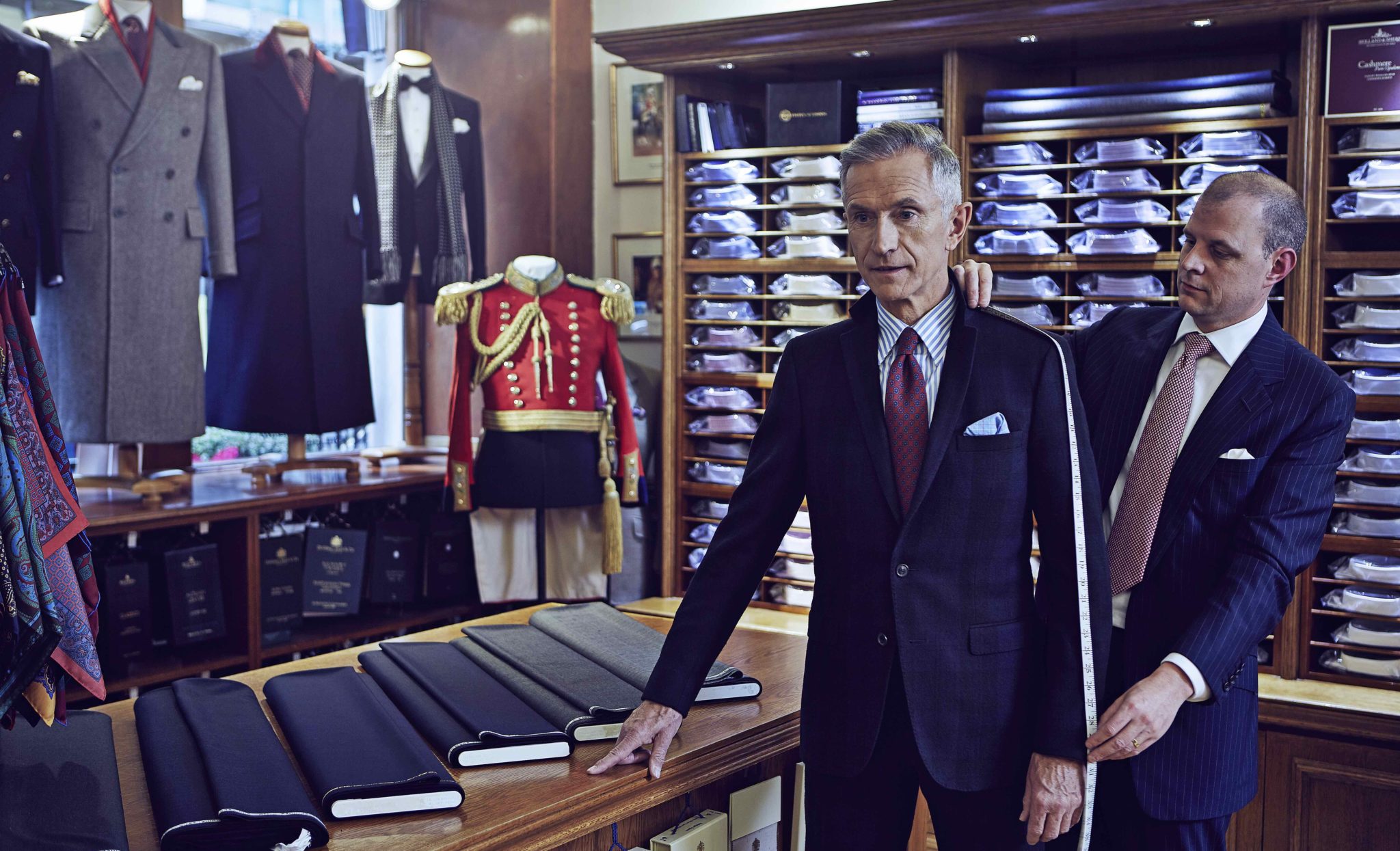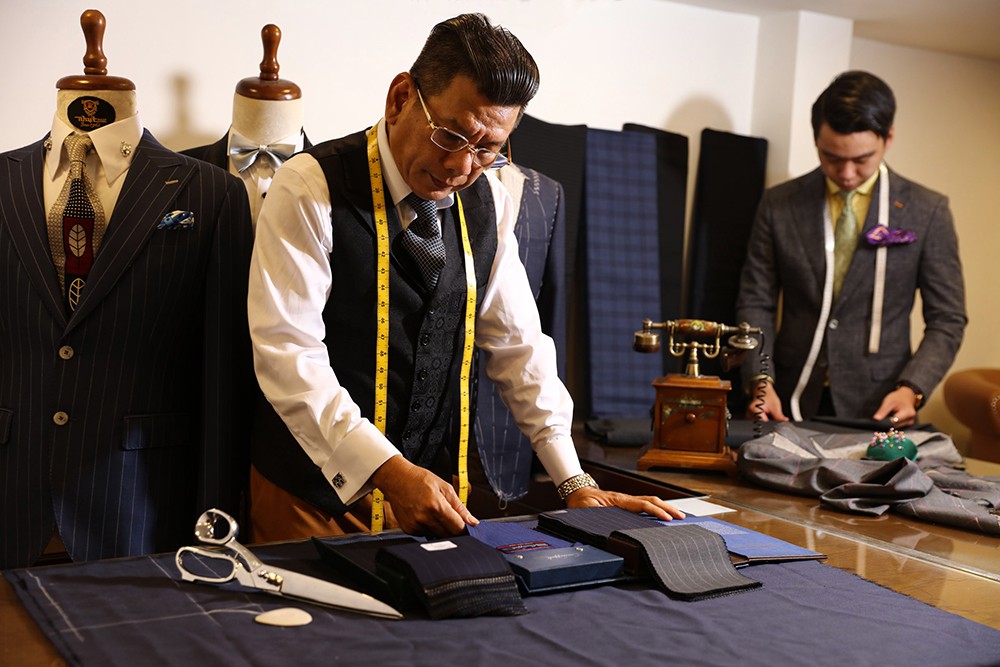How a Bespoke Tailor Produces Custom Clothes That Fits Like a Dream
The art of bespoke tailoring is an advanced procedure that goes beyond mere clothing development, including an extensive understanding of private client requirements and preferences. The trip of a bespoke garment does not finish there; it invites exploration into the nuanced strategies that distinguish true bespoke customizing from off-the-rack choices.
The First Assessment
During the preliminary appointment, the bespoke customizing procedure starts with a complete discussion in between the dressmaker and the client. This crucial action allows the dressmaker to understand the customer's specific demands, choices, and way of living requirements. The discussion encompasses numerous aspects, such as material option, design choices, and the meant use the garment, whether for official celebrations, organization settings, or sportswear.
The dressmaker utilizes a consultative technique to evaluate the client's individual style and visual, using understandings and suggestions customized to private preferences. This joint initiative not only fosters count on however additionally makes sure that the end product will reverberate with the customer's vision. Furthermore, the tailor may present a variety of material swatches, showcasing various structures, shades, and patterns, which function as a structure for notified decision-making.
Throughout this consultation, the tailor also stresses the importance of performance and convenience, talking about exactly how these aspects can be harmoniously integrated right into the design. By the end of the preliminary meeting, the dressmaker and customer establish a solid structure for the bespoke journey, setting the stage for a garment that is as special as the individual it is crafted for.

Gauging for Excellence
With a clear understanding of the client's choices developed, the next step in bespoke tailoring is the careful process of determining for perfection. Exact dimensions are crucial, as they develop the foundation for developing garments that not just fit faultlessly but likewise improve the customer's special body.
The gauging process normally involves a collection of exact calculations, recording different dimensions of the body. A competent dressmaker uses an adaptable measuring tape to acquire dimensions for the upper body, waist, hips, inseam, and arm size, to name a few. Each dimension has to be taken with care, ensuring that the client stands in a natural pose to mirror precise body contours.

Once the dimensions are accumulated, they are carefully recorded and analyzed. This data acts as a plan for the garment construction, making sure that every item is customized to the client's specific dimensions, leading to clothing that really feels like a second skin.
Choosing Fabrics and Styles
Picking the right textiles and styles is a critical facet of bespoke customizing that dramatically affects both the aesthetic and useful top qualities of the garment. The choice of material not only impacts the overall appearance but likewise figures out the drape, convenience, and resilience degree of the garments. A bespoke dressmaker will certainly consider various materials, such as wool, silk, cotton, and linen, each offering unique features fit for different occasions and climates.
Along with material selection, design plays a crucial duty in specifying the garment's character. Whether selecting a modern shape or a timeless cut, the dressmaker teams up closely with the client to understand their personal design, ensuring the final item reflects their individuality. This procedure encompasses details such as lapel styles, pocket placements, and switch choices, all thoroughly customized to improve the user's body.
Moreover, the objective of the garment-- be it official, casual, or organization clothing-- guides the selection procedure, developing a natural look that meets the client's needs. Eventually, the precise attention to textile and style selection is essential in crafting a bespoke item that not only fits completely yet also reverberates with the client's lifestyle and personal preference.
Crafting the Garment
Starting the crafting procedure, a bespoke dressmaker thoroughly converts the client's vision right into a concrete garment. This phase involves a careful selection of strategies and craftsmanship, which are essential for attaining the wanted fit and design. The tailor begins by setting out the chosen fabric, making sure that the pattern aligns perfectly with the grain. Accuracy cutting follows, as the tailor utilizes sharp tools to create each piece with exact measurements.
When the material is cut, look at here now the tailor constructs the elements, skillfully stitching them together to keep the honesty of the design (Bespoke Tailor Perth). Interest to detail is extremely important; strategies such as hand-stitching or machine-sewing are utilized based upon the garment's needs. Throughout this stage, the dressmaker might integrate unique elements, such as custom switches or personalized cellular linings, to additionally improve the garment's originality
The procedure also involves mindful factor to consider of the garment's framework, including interfacing and canvassing, making certain that it preserves its shape with time. Each stitch and seam is a testimony to the dressmaker's ability, eventually leading to a garment that not just fits impeccably yet also shows the client's personal style and choices.
The Final Fitting Refine
After the garment has actually been diligently crafted, the last suitable process is launched to ensure a flawless fit and surface. This vital action involves an in-depth evaluation where the dressmaker assesses the garment on the client. The look here first fitting often reveals areas that require adjustment, such as sleeve size, shoulder alignment, or waistline shapes.
During this fitting, the customer's feedback is invaluable. The dressmaker pays attention diligently to any type of concerns concerning convenience or motion, making sure that the garment not only looks superb yet feels right also. Tacking and pinning may be employed to picture modifications in real-time, allowing the tailor to make exact changes.
Once changes are made, a 2nd installation might be scheduled to verify that all alterations satisfy the customer's expectations. The objective is to accomplish a smooth silhouette that matches the client's body.
Eventually, the last fitting process encapsulates the bespoke tailoring values: a dedication to customization and high quality. It is the conclusion of artistry, collaboration, and skill, leading to a garment that not just fits like a desire yet also reflects the unique style of the wearer.
Final Thought
The bespoke customizing procedure exemplifies the art of creating custom apparel that integrates specific style with remarkable fit. Via careful assessments, accurate measurements, and mindful choice of fabrics, each garment is crafted to fulfill the special requirements of the client.
The art of bespoke customizing is an innovative procedure that transcends plain apparel production, involving a comprehensive understanding of private client needs and choices. The trip of a custom garment does not finish there; it invites exploration into the nuanced techniques that distinguish true bespoke tailoring from off-the-rack choices.
During the preliminary consultation, the bespoke customizing procedure starts with a detailed discussion between the customer and the tailor.The dressmaker utilizes a consultative strategy to evaluate the client's individual design and visual, providing referrals and understandings customized to specific tastes.Starting the crafting procedure, a bespoke tailor thoroughly his explanation equates the customer's vision into a substantial garment.